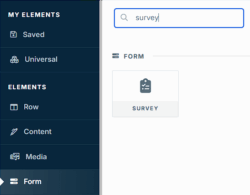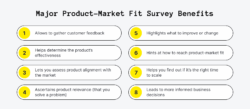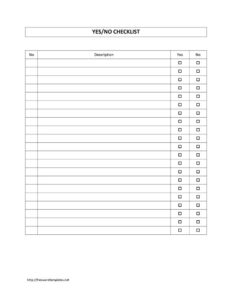When you need to truly understand how people feel about a product, service, or experience, a simple “yes” or “no” often falls short. We live in a world of nuances, and sometimes, a basic rating scale from 1 to 5 just doesn’t capture the full spectrum of opinion. This is where a more granular approach, like a 0 to 10 opinion scale, becomes incredibly powerful for gathering detailed feedback.

The beauty of a 0 to 10 opinion scale survey template lies in its ability to provide a wider range of responses, allowing individuals to express their sentiments with greater precision. Whether you are gauging customer satisfaction, employee engagement, or the perceived value of a new feature, this scale offers rich, actionable data that can drive meaningful improvements. It moves beyond a simple agreement or disagreement to measure intensity of feeling, giving you a clearer picture of where you stand and what needs attention.
Understanding the Power of a 0 to 10 Scale
A 0 to 10 scale is a fundamental tool in quantitative research, offering a flexible and intuitive way to measure various attributes. The scale typically ranges from 0 (representing the lowest possible sentiment, like “not at all satisfied” or “strongly disagree”) to 10 (representing the highest, such as “extremely satisfied” or “strongly agree”). This wide spread of eleven distinct points allows respondents to precisely pinpoint their feelings, avoiding the limitations of scales with fewer options.
Imagine you are asking a customer about their satisfaction with a recent support interaction. A scale of 1 to 5 might lump someone who was “mostly satisfied” with someone who was “just okay” into the same category. However, on a 0 to 10 scale, a response of 8 indicates clear satisfaction, while a 6 might suggest room for improvement, and a 4 signals a definite problem. This level of detail is invaluable for making informed decisions and prioritizing actions.
Why Choose a 0 to 10 Scale?
The versatility of a 0 to 10 scale makes it suitable for a wide array of applications across different industries. From market research and academic studies to internal company surveys, its straightforward nature makes it easy for respondents to understand, leading to higher completion rates and more reliable data. It’s particularly effective for measuring:
- Customer satisfaction (CSAT)
- Likelihood to recommend (closely related to NPS)
- Perceived effort (CES)
- Product usability or design appeal
- Employee morale and engagement
- Agreement with statements or policies
By providing such a broad spectrum, you can identify trends and outliers more effectively. For example, if a significant portion of your responses fall between 7 and 9, you know you are doing well, but still have specific areas to fine-tune to reach excellence. Conversely, a cluster of responses between 0 and 3 would indicate a critical issue that requires immediate attention, allowing you to react quickly and strategically.
This scale also minimizes the “central tendency bias,” where respondents might default to the middle option on shorter scales to avoid strong opinions. With 11 options, respondents are more likely to select a point that truly reflects their position, even if it’s slightly off-center.
Building Your Own 0 to 10 Opinion Scale Survey Template
Crafting an effective 0 to 10 opinion scale survey template involves more than just picking the numbers. It requires careful thought about your objectives, question phrasing, and how you will interpret the results. The goal is to design questions that are clear, unbiased, and directly related to the insights you hope to gain from your audience.
Start by defining what you want to measure. Is it the ease of use of your website, the helpfulness of your customer service team, or the overall value of your new subscription plan? Once your objective is clear, you can begin to formulate specific questions. Remember, the simpler and more direct the question, the easier it will be for respondents to provide an accurate rating.
Here are some practical considerations when developing your template:
- Clearly define your objective for each question to ensure relevance.
- Phrase questions neutrally, avoiding leading language that could influence responses.
- Assign clear, understandable labels to the anchors (0 and 10), and optionally to mid-points if helpful (e.g., 5 as “Neutral”). For example, 0 could be “Extremely Dissatisfied” and 10 “Extremely Satisfied.”
- Consider adding an optional open-ended comment box after the scale question. This allows respondents to elaborate on their numerical rating, providing invaluable qualitative context.
- Test your survey with a small group before launching it widely to catch any ambiguities or technical glitches.
Once you have collected your data, the real work begins. Analyzing the results from your 0 to 10 opinion scale survey template involves calculating averages, looking at the distribution of responses, and segmenting data by different demographics or user groups. This allows you to identify patterns, pinpoint areas of strength, and highlight specific weaknesses that need to be addressed. The numerical nature of this scale makes it ideal for statistical analysis, providing robust data to support your decisions.
For instance, tracking the average score over time can show you whether your initiatives are having a positive impact. Spotting a dip in scores among a particular customer segment might prompt a targeted outreach or product adjustment. The richness of this data allows for a deep dive into user sentiment, empowering you to make data-driven decisions that genuinely resonate with your audience.
Implementing a 0 to 10 opinion scale into your feedback strategy can significantly enhance your understanding of customer sentiment and operational performance. It provides a robust framework for collecting nuanced data, moving beyond surface-level insights to uncover the true feelings and perceptions of your audience. By leveraging this granular approach, organizations can gain a clearer picture of their strengths and weaknesses, fostering an environment of continuous improvement.
Ultimately, the objective is to translate raw data into actionable intelligence. Whether you are fine-tuning a service, optimizing a product, or improving internal processes, the insights gleaned from a well-designed 0 to 10 scale are invaluable. It empowers you to make smarter decisions, enhance satisfaction, and build stronger relationships with those whose opinions matter most.



